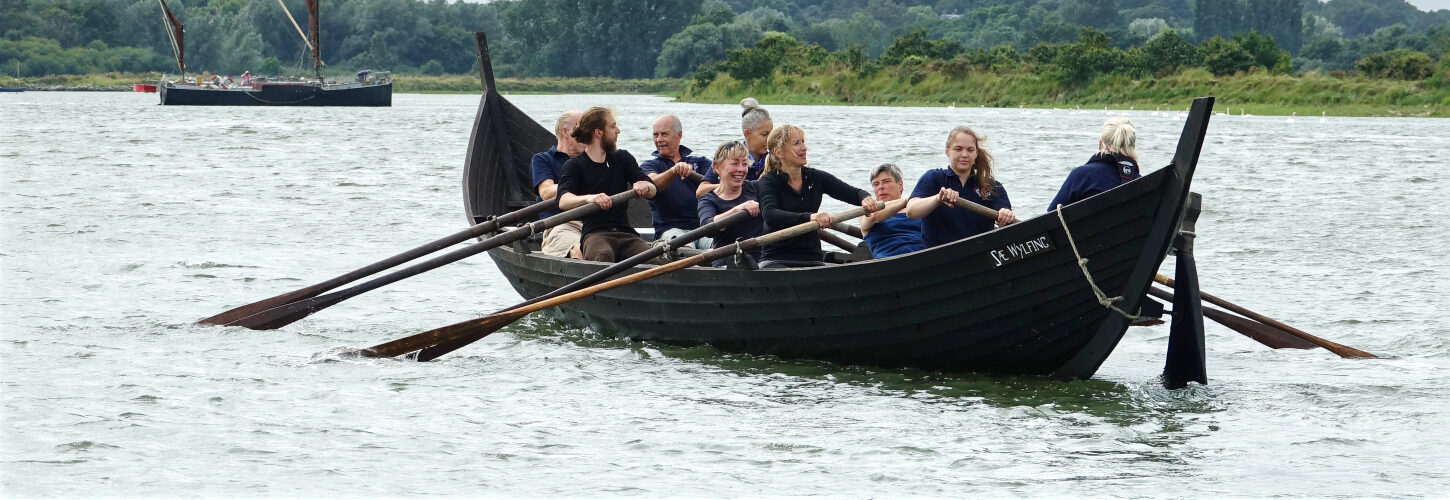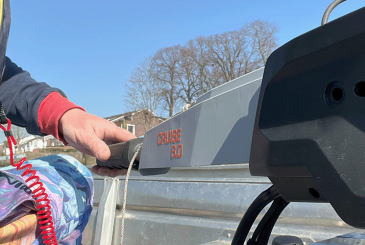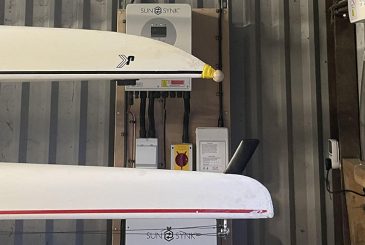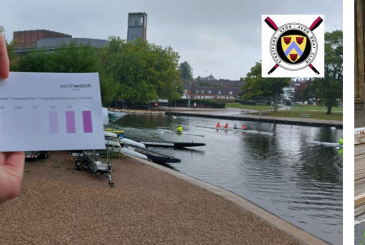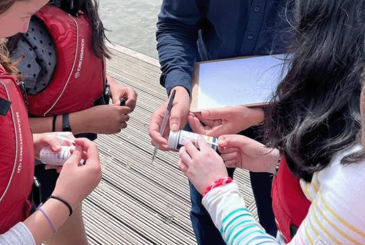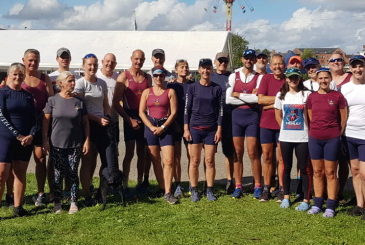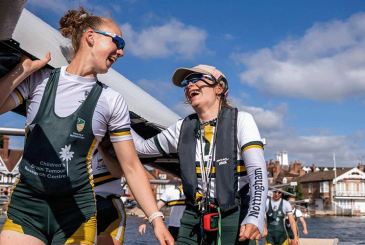British Rowing Coach Educator Jacq Barnard is project managing a very special boat build in Suffolk. Catherine Larner finds out more
There are any number of reasons why you might decide to form a rowing club, but seeking to re-enact the last voyage of an Anglo-Saxon royal ceremonial ship is probably among the most unusual.
The Sutton Hoo Ship is currently being constructed in Woodbridge, Suffolk, in a unique and ambitious feat of ‘experimental archaeology’ culminating in the launch of the boat on the river, probably in spring 2023.
A crew of up to 40 competent, experienced oarsmen will be needed to power and manoeuvre the 27-metre vessel and many questions about how that will be achieved are still to be answered.
British Rowing Coach Educator Jacq Barnard is the Sutton Hoo Project manager, tasked with the role of exploring the solutions and she will be inviting rowers to join her in land and river trials ahead of the inaugural outing.
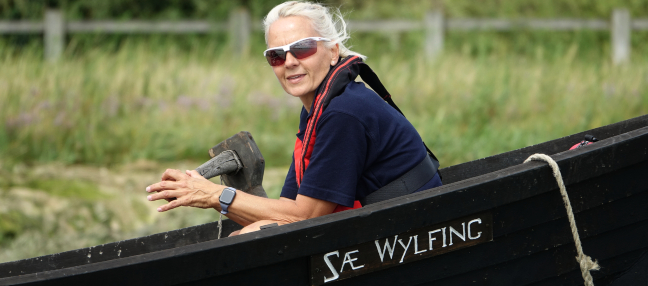
“This will be a magnificent ship, a real spectacle on the river,” she says. “But there’s a lot we need to get right in such a high-profile project, and there won’t be a practice run.”
The shadow of this vast, ancient vessel has lain in the ground above the River Deben in Suffolk for 1,400 years. Believed to be the burial place of the East Anglian king, Raedwald, in around 624AD, stains of timbers and rusty iron rivets were all that remained when the treasure, one of the richest finds in England, was removed and installed in the British Museum in the famous excavation of 1939. Now, historians, shipwrights and many volunteers are using the specifications meticulously gathered by those wartime archaeologists to reconstruct the Sutton Hoo Ship and gain a greater understanding of our earliest maritime history.

“We knew it was a rowing boat,” says Professor Martin Carver, chair of the charitable organisation running the project, the Sutton Hoo Ship’s Company. “It had bits of wood – tholes – that you place the oar against to row. And this boat definitely had royal pretentions – it was meticulously made and incredibly large. But assembling it shows us what works and what doesn’t – the ship is teaching us what it should look like. The more we work on it, the more we realise what a thing of beauty it would have been.”
With each step forward in the construction, more questions are raised and decisions made. “The biggest surprise, I think,” says shipwright, Tim Kirk, “is how accurate and how skilled the Saxons were – and this ship was built using axes.”
There are some 60 people currently engaged in the project, and more will be needed as work progresses. In addition to building the ship, using the materials and techniques which would have been in place all those years ago, volunteers are fulfilling other tasks such as research, documenting, photography, marketing, fundraising, and rowing trials too, all coordinated and directed by Jacq Barnard.
Having worked as an accountant, auditor, project manager and teacher, and currently captain of Deben Rowing Club, founder of the newly formed Woodbridge Coastal Rowing Club and a British Rowing coach, she is ideally qualified for this role.
“I was approached to join the Sutton Hoo Ship’s Company because someone at Deben Rowing Club realised I had the skills and experience needed,” she says.
She hopes this newly formed Woodbridge Coastal Rowing Club will feed into her Saxon rowing squad which will need around 120 rowers
“Rowing has opened up all sorts of opportunities for me, and has become something of an obsession.”
After taking up the sport to distract herself in coping with a family illness, she has competed extensively, winning cups in double sculls and undertaking various endurance rows across the country. But she delights in being able to spend time on the river in Woodbridge, which flows not far from the bottom of her garden.
“It’s a fantastic river, no two days are the same. And there’s a big network along the river of people using it in different ways, so it’s nice to be part of that. I get a real joy from helping people to experience new things.”
Recently she’s found that coastal rowing boats can open up river outings to the wider community.
“We have about 25 members at the moment, and the one boat, but a second skiff is currently being built. We hope to attract many more people because it’s easy to learn and more accessible than sculling in fine boats.”
She hopes this newly formed Woodbridge Coastal Rowing Club will feed into her Saxon rowing squad which will need around 120 rowers with whom she can undertake the extensive water-based trials when the Sutton Hoo Ship is seaworthy.
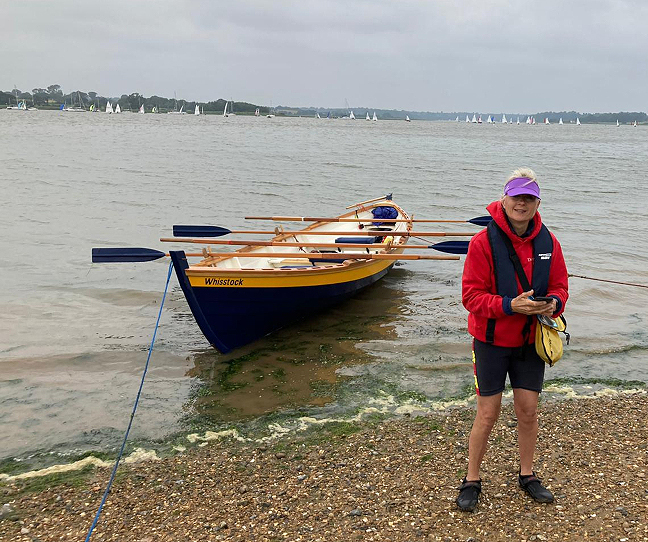
“As soon as we launch the ship, we will have lots of scenarios to test,” she says. “We don’t know at the moment what the ship was ever used for. We don’t know how far they would have taken it. Would they have rowed it into battles? Would they have carried cargo? Would they have lived on it? We don’t know its capabilities, but we do know it was probably on the water for about 20 years.
“We need to get to a point where we’re confident enough to take it into trickier waters, and possibly out to sea. And the final stage will be establishing whether it could be put to sail. These trials will take several years, so we’re going to need volunteers who will be available for some time.”
“Rowing this ship will be really, really thrilling”
At present the team has the benefit of a half-size replica boat on which to trial some of these elements. Called Sae Wylfing, meaning ‘Sea Wolfcub’, this boat was built in 1993 and has largely been shore-based and towed on a trailer to locations around the country to raise awareness and heighten curiousity about Anglo-Saxon life.
Its distinctive curled leaf silhouette means that the oars are of differing lengths, depending on the location in the boat, and they sit against a thole, a wooden crest of a wave, loosely tied with a rope and toggle.
The oarsmen sit on wooden planks spanning the width of the boat and, one behind the other, are restricted in how far they can reach for the length of their stroke.
The side rudder used by the helmsman is effective, but the visibility is restricted by the high prow.
The Sutton Hoo Ship, being double the length and with five times the number of oarsmen, would see these challenges magnified, of course.
“We don’t know how they would get into the boat, with 40 enormous oars, or if they would sit or stand to row. How would they hear their instructions to row and how would the helmsman see to steer the boat?
“We’re confident it’s actually going to float and that we will be able to row it,” Jacq says. “But we’ll be doing progressively more complicated trials. Initially, it will be about having it on the water and seeing how to manoeuvre it, what ballasting we might need and how our rowers might need to perform.”
Jacq is working with a colleague well known to British Rowing, Jim Flood, who is assisting with the biomechanics of positioning the rowers and their oars within the hull of the ship.
“Because we’re working with the outer shell of the ship from the archaeological dig, there is no evidence of the seating or the oars that would have been used. We have created a section of the ship from plywood to experiment with seating positions and the angles, weight and length of the oars, and how these might be secured.
“We are making the tiniest changes for each trial. It’s no different to rigging racing sculls – you make a small change and then you test it. If it doesn’t remedy the issue, you put it back and make the next incremental change.”
“There’s a real buzz,” says Joe Startin, a director of the Sutton Hoo Ship’s Company. “We cannot wait to watch this magnificent vessel slide down the slipway into the river. Rowing this ship will be really, really thrilling.”
Get involved with the Sutton Hoo project
You can find out more about the project here, plus anyone interested in helping to build the ship or be part of the company can also visit the volunteering section.
If you’d like to be part of the rowing crew, sign up for the newsletter to receive news of when rowers will be invited to apply. You can also support this project by sponsoring a rivet to help with the fundraising and be an ongoing part of the ship’s legacy. All rivets are numbered and the owners are given details on their location on the ship.
Photos: Andy Mills


